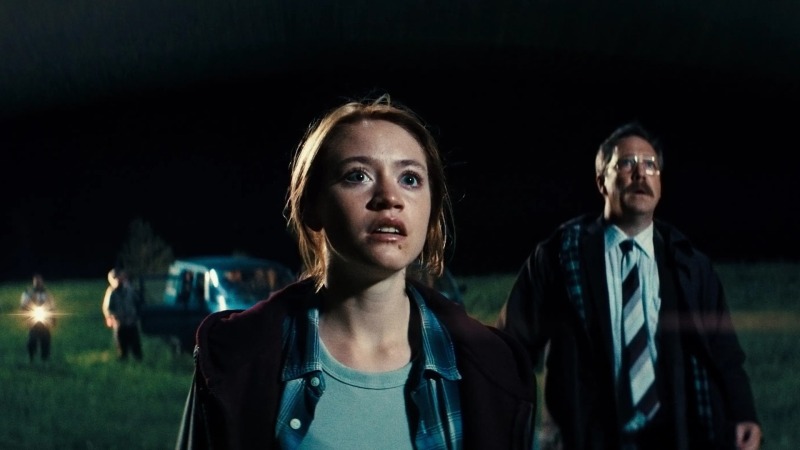Watch the Skies Is a Heartfelt Nordic Ode to Spielbergian Sci-Fi

As Watch the Skies glides into a limited engagement in select AMC Theatres locations this weekend, it would be interesting to know precisely what percentage of its audience is aware of the fact that the film was originally released in its native Swedish, in 2022, as UFO Sweden. That the film now finds its way to a belated U.S. theatrical release speaks to both its inherent, audience-pleasing qualities, as it performs a more-than-serviceable tribute to the nostalgic tropes of Steven Spielberg and J.J. Abrams, and to the transformation it has recently undergone to make the film more marketable for U.S. release. Specifically, XYZ films’ Watch the Skies represents one of the first theatrically released movies to come stateside that has used the AI-driven, state-of-the-art process (via TrueSync, from AI startup Flawless) of “visual dubbing” or “vubbing” to more perfectly synch rerecorded English dialogue to mouths that now appear to fit those English words. The end goal: To make the film look like it hasn’t been dubbed at all, but rather filmed in English by its Swedish cast and crew, for the sake of more natural audience immersion.
This is, to put it bluntly, a touchy film industry topic for a film like Watch the Skies to broach, but it attempts to walk a fine line in emphasizing how its use of AI is intended purely to increase the film’s accessibility rather than to cut artistic corners. It has not been used, for instance, to simulate the actors’ dialogue–the original Swedish cast all rerecorded their own lines in English. Nor does AI somehow replace the entire face or expression of each actor–only their mouth in motion. Naturally, some audience members and industry members will still object, seeing the technology as a slippery slope that leads toward replacing actors or other post-production professionals. But at the same time, a company like XYZ Films makes its pitch that the process will make possible the release of more foreign language films in the U.S., reaching audiences who simply won’t engage with subtitled content–XYZ already plans the subsequent U.S. releases of several more films originally filmed in German, French, Korean and Persian. Those who prefer original language and subtitles will still presumably be able to consume these films that way in the physical media and streaming releases that follow.
How, then, does this actually look in practice? The honest answer is: Pretty good, to the point that the visual effect should be nearly seamless to the average viewer. Those who are intensely focused on attempting to critique the CGI used in redubbing the actors’ mouths will likely spot some oddities and artificiality, but I honestly don’t believe a typical audience member who was unaware of the process used for this release of Watch the Skies would be aware of it at all. The redubbing, on the other hand, varies from performer to performer, with some inherently being more legible in English than others–a factor of the actors, rather than the technology.
As for the film itself, director Victor Danell’s Watch the Skies is a deeply nostalgia-driven sci-fi adventure film, performing a not at all subtle Amblin devotional, but its heart remains in the right place. The films namechecked and directly evoked here are almost too many to count: The Thing From Another World, Close Encounters of the Third Kind, Interstellar, Terminator 2 and Contact come to mind immediately, as do more modern influences that include the likes of Stranger Things or an indie sci-fi feature like The Vast of Night. Watch the Skies isn’t shy about its liberal borrowing, but it also stands out for its genuinely attractive construction. This is an extremely well-lensed Swedish feature, with attractive imagery, beautifully framed faces and consistently impressive visual FX. It hardly matters that its narrative is so persistently familiar when it’s all been executed this well.
Watch the Skies revolves around vaguely teenage Denise (Inez Dahl Torhaug), a troublemaker, John Connor-esque computer whiz in the mid-1990s who is questing after answers following the disappearance of her father when she was young. Dad was a true believer in an amateur UFO research society (“UFO Sweden”) that many of the other characters refer to as a “cult,” although if anything they’re more like a bickering model U.N. filled with kooks, conspiracy theorists and societal rejects, who occasionally turn to overt federal crimes in order to pursue their arcane theories about alien spacecraft. In recent years since her dad disappeared, UFO Sweden has seemingly spent most of its time arguing about the finer points of coffee and pastries–you won’t believe the amount of coffee talk in this screenplay–while collecting witness statements from various people who have mistaken the full moon for UFOs. That is, until Denise rolls in with a hot new tip about the sudden reappearance of what seems to be her father’s old car, reigniting the manhunt as she pushes the group into ever more questionable legal territory as they attempt to pry key data away from SMHI, the The Swedish Meteorological and Hydrological Institute, presented here like a Stranger Things-esque front for nefarious government experimentation.